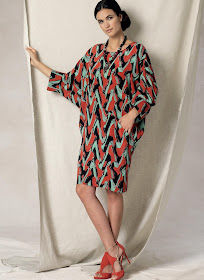Of course, this didn't just start. I begin to noticed the focus on sleeves about five years ago. One of my first recollection was when Rhonda Buss begin to post "Sleeves on Saturday". Immediately, I was intrigued and wanted to try my hand at it; but felt a little intimated by the whole process. So, I downloaded the instructed and stored them on the bookshelf for safe keeping. I started feeling a little courageous a few days ago, I decided to take another look at what Rhonda posted in 2012.
I belong to two groups on Facebook called: "Pericrafters" and "SewMuchTalent". For the month of June, our challenge is to hack McCall M6886. Usually, I start early in the month deciding what I'd create for the challenge. This month, I did not because there is such a saturation of sleeve design options available. So why hack as if sleeves are the only thing to hack. Anyway.
This brings my back to Ms. Rhonda. She has created some very interesting sleeves. Perfect for any sleeve hacking you or I may want to do. And I haven't seen her designs in any patterns yet.
 |
| Butterfly Sleeve |
 |
| Rhonda - Cowl Draped Sleeve |
 |
| Rhonda - Cowl Sleeve |
 |
| Rhonda - Shirred Wrist Sleeve |
So to share with all of you, here are a few sleeve options from her series that I am considering. No date in sight for doing these. I do plan to try at least one of them. Join me if you please. ;-)
Happy Sewing!
C




















































